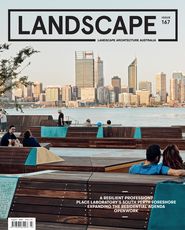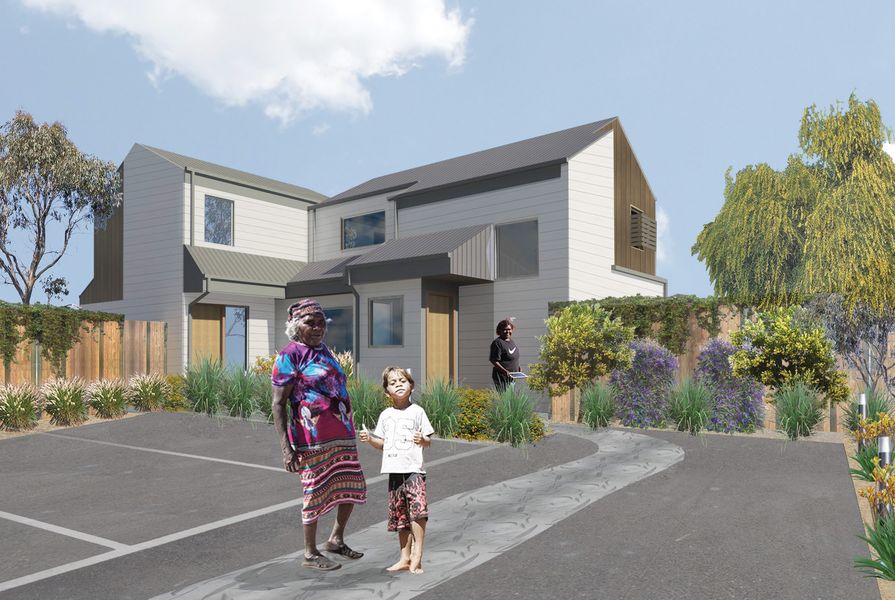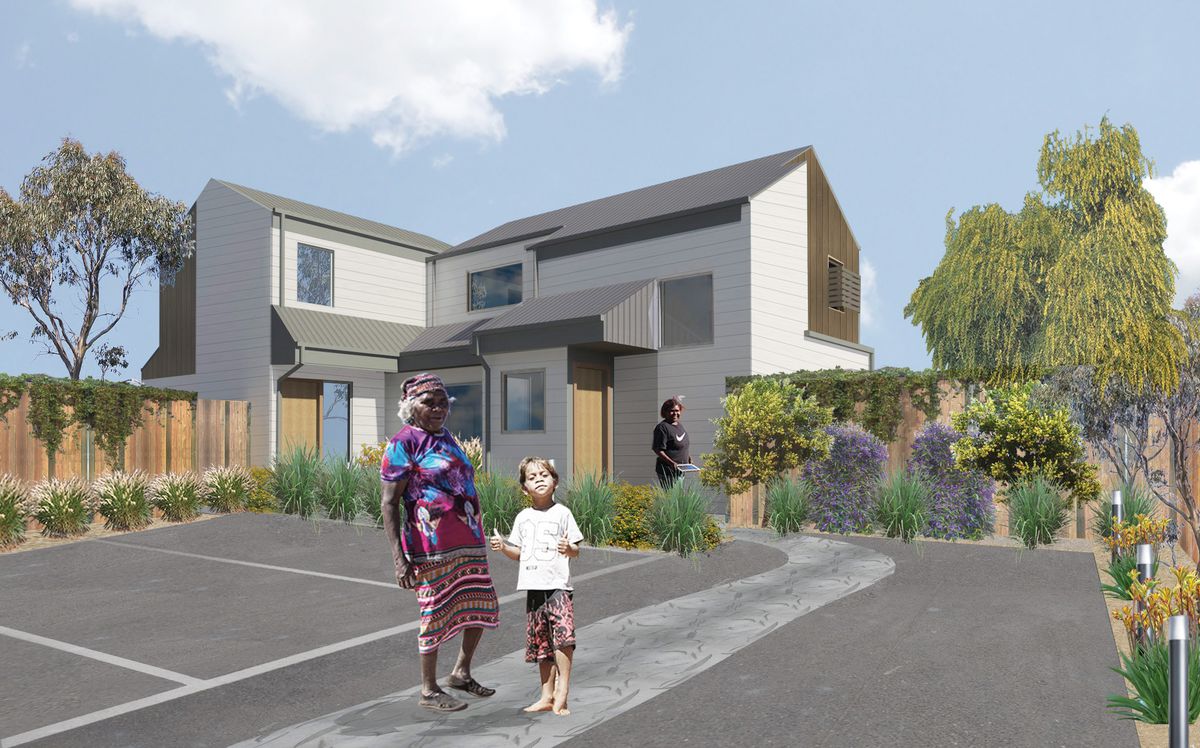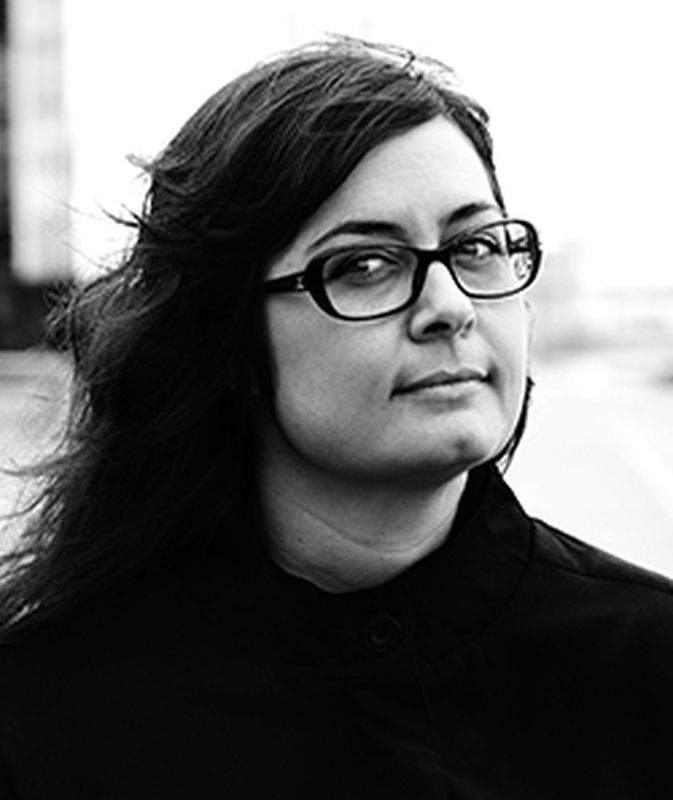Sophie Dyring, director of Schored Projects.
Jen Lynch: I’ve heard you speak about a few of your projects – the Launch Housing project, the Coburg Townhouses and a project for Aboriginal Housing Victoria. Could you give an overview of these?
Sophie Dyring: The Launch Housing project is a social housing project in Footscray that provides housing and services to people who are homeless or at risk of homelessness. Out of the nine sites, two are completed and seven are under construction still. The Coburg Townhouses are a project by Women’s Property Initiatives. The project involves seven townhouses and was completed in 2016. There have been women and women with kids living there for the past four-and-a-half years. For Aboriginal Housing Victoria, we’re doing four projects – all infill housing in the south-east of Melbourne.
JL: The clients for the three projects are housing not-for-profits. How did you become involved?
SD: I began my practice over a decade ago with Graham Gunn. We did a lot of private residential projects and I wanted to open that up to social housing work. It was a long, hard slog of opening up my network and meeting people until I got a foot in the door with one of them. We’ve managed to get a few of them now.
JL: Across the three projects, how were the landscape briefs presented to you? Did you think about the landscape scope on different terms?
SD: Aboriginal Housing Victoria had the most developed brief, because they have seven design principles that they’ve developed through consultation with their tenants – for instance, tying internal and external spaces together so that families can expand and contract. That connection of internal and external spaces is something we generally do when we work anyway, but, in this project, we’ve extended that even beyond the private space into the communal landscape – in one of the projects, there’s a central car park of three cars, one for each unit. But that’s also been considered as a place for the community to gather, because if cars were parked on the street, they’d have a much larger space. The landscape briefs for the Launch Housing and Coburg Townhouses projects were minimal –low-maintenance, drought-tolerant.
JL: How does research play out in your practice? I know you collaborate frequently with Sam Donnelly and that you’ve recently been awarded funding for post-occupancy research.
SD: I’ve always been keen to do post-occupancy research, because, at the start of these projects, it’s impossible to get the brief directly from people that are going to live there – community housing organizations can’t bring future tenants on board when they’re briefing for a new project because they don’t know who’s going to live there. Because all briefings come from an organization, I’ve felt one step removed from who’s going to live there in the end. I’ve wanted to close that divide. Sam Donnelly is a PhD fellow at Monash [University] and our collaboration has continued since [we were] introduced. Last year, we put together a symposium for Melbourne Design Week: Women, Design and Housing. We were recently awarded a grant by the Lord Mayor’s Charitable Foundation, which supports research into housing and homelessness. We’re using the grant to investigate how these issues relate specifically to women. We’re hoping we can use female community housing residents’ feedback to make the next projects more fit for purpose and address things that aren’t working.
JL: Could you describe the role of the landscape in any of your projects, on an individual level or on a community level?
SD: In feedback from organizations and from tenants, there’s been quite a bit on landscape. On the Launch Housing project, Deb (one of the residents in the first site that was finished and occupied) said the space that makes her feel like she has a home for the first time in 35 years is the garden above the building accommodation. The garden is her most important space in her little house. At the Coburg Townhouses, we designed a productive landscape that was meant to bring the on-site community together. It has brought the community together but in a totally different way. Several residents came together to redesign the space, so it has achieved the objective we had but not through the means that we thought.
To read Jen Lynch’s interview with Simone Bliss of SBLA go here, for her interview with Alistair Kirkpatrick and Anthony Sharples of AKAS Landscape Architecture, visit here and for her chat with Mark Jacques of Openwork, go here.
Source

Practice
Published online: 18 Jan 2021
Words:
Jen Lynch
Images:
Schored Projects
Issue
Landscape Architecture Australia, August 2020














